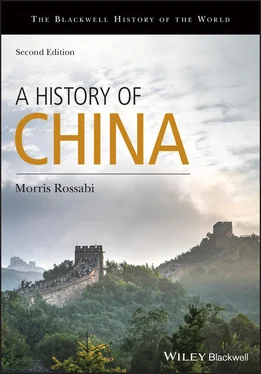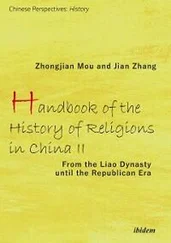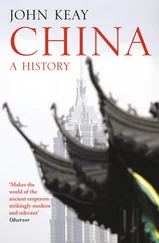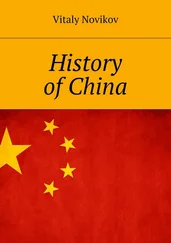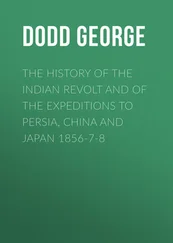A military handbook could be useful in fulfilling this need. Other handbooks probably preceded it, but the Ping fa ( Art of War ), probably written in the fourth century BCE by Sunzi, offered such guidance. The Zhou vassals used this handbook as a guidebook for fending off enemies and ensuring authority in their domains. Although it dealt with battle tactics and strategy, it also emphasized supposed auxiliary aspects of warfare such as espionage and intelligence information, support from the populace, and cleverness in deploying troops rather than simply focusing on manpower and weaponry. The writer asserted that the best commanders would gain their objectives without a battle, an example of so-called soft power. Military historians often refer to it as one of the first descriptions of guerilla warfare.
The Zhanguoce ( Intrigues of the Warring States ), another contemporary text, also reflected the difficult times. The work offered a guide to proper diplomacy for the often hostile states in this period and provided means of avoiding conflict. Pointing to reportedly real historical events, the work inculcated a set of diplomatic principles that could be used in averting catastrophic wars against other states.
Meanwhile, raids by non-Chinese peoples along the country’s frontiers, together with the increasing disaffection of its vassals, contributed to the growing decentralization of the Western Zhou. Natural catastrophes, including a serious earthquake in the reign of the last king, added to its troubles. The dynasty was increasingly vulnerable, and it should come as no surprise that foreign forces – so-called barbarians – raided the capital in 771 BCE, killing the king and compelling the dynasty to transfer its capital eastward to the Luo River valley, near modern Luoyang. Abandonment of the capital and the onset of the Eastern Zhou signaled a significant diminution of the central government’s authority. For the remaining five centuries of the dynasty, vassals often acted on their own. The court did not have a military force and did not have the power to command its vassals to provide troops for any campaigns. It also could not count on regular tribute or tax payments, precluding the development of essential large-scale public-works projects and the creation of a loyal bureaucracy. In short, the court had scarcely any political or military power, and the king was principally a figurehead who undertook ceremonial and ritual functions and, on occasion, adjudicated disputes or questions of legitimacy concerning specific lords. The Eastern Zhou thus consisted of a number of independent states that over the last three centuries of the dynasty were intermittently at war in order to determine who would succeed the ineffective Zhou rulers.
CHANGES IN SOCIAL STRUCTURE
Peasants constituted by far the largest segment of the population, although written sources about them are scarce. They grew millet, wheat, rice, hemp seeds, and beans and divided their produce with the lord, who also demanded corvée labor from them. Later writers, notably the philosopher Mencius (the Latinized version of his personal name, Meng Ke), also called Meng Zi (Master Meng), asserted that the land had been divided according to a so-called “well-field system.” Eight families tilled a plot of land each, and they also farmed a ninth plot, which belonged to the lord. The pattern of fields, which looked like a tic-tac-toe board, also resembled the Chinese character for “water well,” lending the system its name. It is unclear whether the well-field system ever actually existed. The sources indicate that the peasants provided tribute and corvée service while the lord offered land and protection – a typical “feudal” arrangement – though it may be stretching the comparison with Europe to refer to the peasants as “serfs.”
Differences in style of life, based on position in the hierarchy, were also apparent. Lords ate far more meat while farmers subsisted on vegetables and soups at best and on stale grain and leaves at worst. Clothing for aristocrats was more elaborate and included more luxurious materials, such as jade and silk, than the dress worn by peasants. The lords led the peasants on hunts in the winter to train them as a military force. The ceremonies practiced by the elite and the peasants did not differ considerably, though the elite’s rituals were more lavish. Even at this early stage, marital ceremonies emphasized the submissiveness of women – though, as will be explained later, women may in fact have been more assertive than this stereotyped portrait. In any event, parents urged the prospective bride to be obedient, and she herself moved into her husband’s home having been advised to serve and to submit to her new family. Despite similarities in marital and ancestral ceremonies, the differences in the lifestyles of the lords and the peasants were striking.
POLITICAL INSTABILITY IN THE EASTERN ZHOU
The shift of the capital and the establishment of the Eastern Zhou in 770 BCE ushered in political and military turmoil, but paradoxically it also witnessed extraordinary economic and technological developments and the onset of great intellectual ferment. On several occasions in their history, the Chinese reacted to chaotic conditions with economic and institutional changes and either new or refurbished ideologies designed to create unity or at least foster a more stable environment. Major philosophies and religions frequently made their first appearances during unsettled times in China. Daoism, Confucianism, and Buddhism, the three dominant religions or cults in the history of the Middle Kingdom, all emerged during troubled eras in Chinese society.
The Eastern Zhou was certainly a troubled, unsettled time. This era is often divided into two discrete segments, the Spring and Autumn period (722– 481 BCE) and the Warring States period (403–221 BCE). The appellation “Spring and Autumn” derives from the Spring and Autumn Annals ( Chun qiu ), a text perhaps written by the great philosopher Confucius that offered a factual, if somewhat tedious, account of interstate relations at that time. This work lacks interpretation and the fullness of a true history, leading to speculation about Confucius’s motives in compiling the text. Some students have suggested that Confucius may have valued the Annals because it was the first attempt to set down events in Chinese history in chronological order without embroidering the facts with invented dialogues and fabricated evidence meant to underscore a moral. Later scholars wrote commentaries designed to flesh out the spare details offered in the text and to provide it with a moral and didactic frame-work. It eventually became associated with the Zuo Commentary ( Zuo zhuan ), a source dealing with many of the same events (through 468 BCE) but with more elaborate and more colorful and lengthier descriptions. Both texts described turbulent times.
The founding of the Eastern Zhou coincided with the virtual disintegration of the king’s power. The nobility was autonomous and no longer felt obliged to provide military service and tribute to the Zhou ruler. Nor did nobles appear in person at the Zhou court to be invested with authority. Some formed their own states that were not controlled by the king. The proliferation of such states engendered fears of strife. Thus, in the seventh century BCE an overlord or hegemon ( ba ), supported by lesser leaders, sought to impose order with the blessing, for whatever it was worth, of the king. Five rulers in succession assumed the role of hegemon and are credited with stemming disorder for a time, but interstate hostility intensified throughout this era.
The principal states were in the Central Plain, which was surrounded by so-called barbarian groups. These states comprised Jin, which later broke up into the states of Zhao, Han, and Wei, Lu, Qi, and Song, while the states on the fringes of what was perceived to be Chinese civilization consisted of Qin (the westernmost of the states), Yan (which included the area around modern Beijing), Wu (along the eastern coast, near modern Shanghai), Yue (directly south of Wu), and Chu (in the southwest). In general, the states on the periphery were in more advantageous positions because they had room in which to expand and could avoid conflict until they themselves were prepared to do battle. However, until the third century BCE, these states waxed and waned depending on their conditions at particular times, for each had unique strengths and weaknesses. Qi, for example, had reserves of iron and salt, perhaps facilitating its construction of weapons and enriching itself through sale of its precious salt. It also had the advantage of the administrative reforms introduced by Guan Zhong (ca. 720–645 BCE), the influential counselor to its lords and the author of an important work of political philosophy, the Guanzi . Jin, on the other hand, controlled much of the territory around the bend of the Yellow River.
Читать дальше
